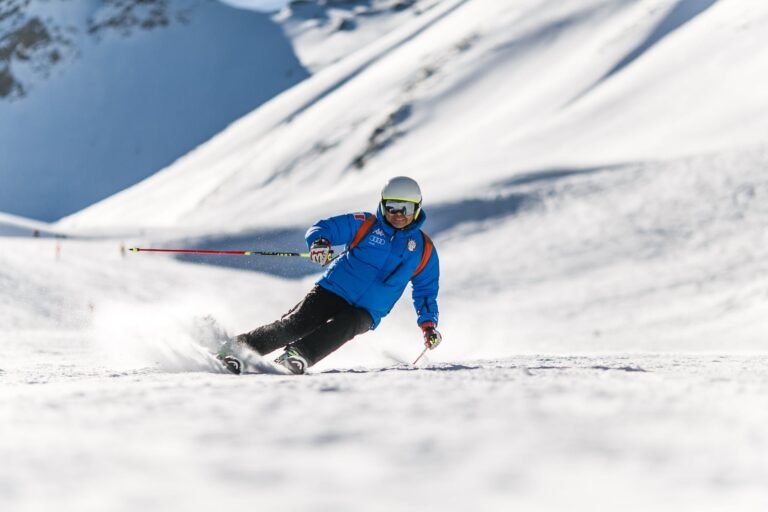Pow Skiing: Your Essential Guide to Fresh-Powder Fun

Ski and snowboard enthusiasts often seek out ski resorts for the thrill of gliding on fresh powder snow. This experience, particularly known as pow skiing, stands out for its unique feel and technique. It involves making turns on a mountainside covered in soft, freshly fallen snow, creating a spray of snow with each movement. This type of snow, often referred to as “powder” or “pow,” is highly prized among winter sports fans for its light, fluffy texture that offers a distinct and exhilarating skiing experience.
Key Takeaways
What is Pow Skiing?
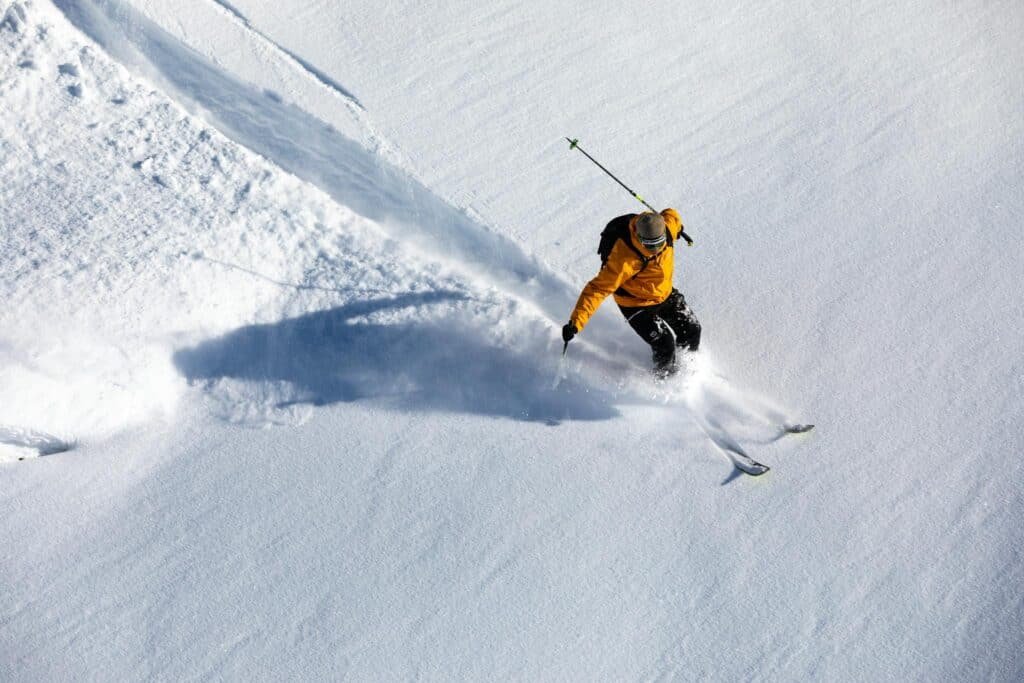
‘Pow’ is shorthand for powder, a term denoting the deep, soft snow that has yet to be touched by a ski or snowboard. This type of snow is what winter dreams are made of. It’s light, and fluffy, and provides a unique skiing experience that is hard to beat. Every turn in this untouched, fresh powder snow feels like floating; the skis or snowboards barely leave a trace behind. It’s an experience that every skier or snowboarder yearns for, and it’s why powder days, days with fresh snowfall, see a surge of activity on the slopes.
However, it’s worth noting that not all snow is the same. Powder skiing enthusiasts are particularly fond of blower powder and champagne powder. Blower powder is so light and dry that it blows away in the wind, while champagne powder is renowned for its light, fluffy characteristics. These conditions provide the ultimate pow skiing experience and are highly sought after by powder hounds, a term used to describe individuals who are passionate about seeking out the best powder conditions.
The culture of powder skiing is as distinctive as the experience it offers. Skiers throw around terms like ‘face shots’, referring to powder spraying up from a turn, and ‘white room’, when visibility is obscured by snow. This jargon is a testament to the exhilaration that comes with skiing in fresh powder.
Preparing for the Powder: Gear Essentials

Before you leave your mark on the virgin snow, it’s vital to equip yourself with the right gear. The proper equipment can enhance your experience and ensure a safe and enjoyable time on the slopes. Skiing in powder conditions requires skis specifically designed for deep snow. This includes:
Mid-fat skis known for their adaptability
Shaped skis with an hourglass design for effortless turning
Skis equipped with rocker technology for staying afloat on powder
Bindings are another key component of your skiing gear. When choosing bindings for powder skiing, it’s important to consider the following:
The waist width of your skis
Any integrated systems
The compatibility of the bindings with your ski design
The ability of the bindings to allow you to maintain control in deep snow conditions.
Your ski boots are the connection between your body and your skis, and as such, they play a significant role in your skiing experience. When choosing ski boots for powder skiing, it’s important to consider a balance of flexibility and support, as indicated by the flex index. Ensuring a proper fit and the availability of customizable liners and footbeds can also enhance your performance.
And, of course, don’t forget your outerwear. When you’re out in the snow all day, you need clothing that will give you protection from the elements while also allowing for freedom of movement. This means choosing a waterproof or water-resistant jacket that is specifically designed for alpine skiing.
The Technique of Pow Skiing
Once you’ve got your gear arranged, it’s time to take to the slopes. But skiing in powder isn’t quite like skiing on groomed runs. The soft, deep snow requires a different technique. One of the key elements in powder skiing is the weight distribution.
Jetting, the acceleration achieved by propelling the feet forward upon exiting a turn, is integral to the effective distribution of weight in powder skiing. It involves adjusting your center of mass towards the direction of the turn to maintain balance and manage the skis.
The Weight Shift
Effectively shifting your weight is key when skiing in deep powder snow. This technique allows for better control and maneuverability on the snow. By adjusting the pressure on your skis, you can maintain balance and initiate turns more effectively. This also helps to prevent your skis from getting stuck in the snow.
When you’re skiing in powder, it’s important to:
Distribute your weight evenly over both skis. This helps to maintain balance and control.
Maintain a centered position and refrain from leaning too far forward or backward.
Flex your ankles and maintain contact between your shins and the fronts of your boots to keep your body in the correct position.
The way you shift your weight can also affect your ski’s flotation in deep snow. Shifting your weight forward can help to keep the tips of your skis on top of the snow, enhancing flotation. Meanwhile, shifting your weight to the back can prevent the tails from sinking, leading to improved control and maneuverability in deep snow.
Floating on Snow
Floating on snow is a sensation that many skiers strive for when skiing in powder. To achieve this, follow these tips:
Maintain balance by keeping your upper body balanced over your feet.
Keep your skis close together to increase surface area and help you float on the snow.
Evenly distribute your weight across both skis to maintain balance and achieve a floating sensation.
However, it’s not solely about technique; your equipment can also contribute to your ability to float in deep powder. The stiffness of your boots, the width of your skis, and even the position of your bindings can all influence your flotation. By understanding how these factors interact, you can improve your ability to float in deep powder.
Navigating Steep Terrain and Trees
Navigating steep terrain and trees presents a challenge when skiing in deep powder. When you’re skiing in powder, you can use techniques like short-radius turns to maneuver quickly and change direction. It’s also important to be aware of the fall line, which is the most direct route down the slope, often referred to as skiing straight downhill. By keeping an eye on the fall line, you can choose the most efficient path down the slope.
In addition to wide, open slopes, cross-country skiing, and terrain park features, many ski resorts also offer gladed areas for tree skiing. These are sections of forest where the trees are spread out enough to allow for skiing. Skiing in these areas requires a different set of skills, including the ability to make quick, controlled turns.
When skiing in steep terrain, another useful technique is the ‘jump turn’. This involves jumping in the air to change direction. This can be especially useful on very steep slopes, where it can help to control your speed and prevent you from going too fast.
Safety in the Backcountry: Avoiding Hazards

Despite the undeniable thrill of skiing in fresh powder, it’s vital to keep in mind that safety should always be your primary concern. This is especially true when skiing in the backcountry, outside the boundaries of a ski resort, where there is no avalanche control or prepared runs. When you’re skiing in the backcountry, you need to be aware of the potential hazards and know how to mitigate them.
Environmental hazards are a major concern when skiing in the backcountry. Conditions can change rapidly, and what was once a pristine slope can quickly become a dangerous terrain. Some of the hazards you might encounter include:
Whiteouts, where visibility is severely limited
Avalanches, which involve large amounts of snow sliding down the mountain
Tree wells, which can pose a suffocation risk if you fall into one,
It’s important to be aware of these hazards and take the necessary precautions to ensure your safety while skiing in the backcountry.
Ensuring safety requires being prepared and having the appropriate equipment. One piece of equipment that can be a lifesaver in the backcountry is the RECCO Rescue System. This system uses detectors to locate reflectors that are attached to clothing and equipment, increasing the chances of being found in the event of an avalanche.
Top Ski Resorts for Pow Skiing
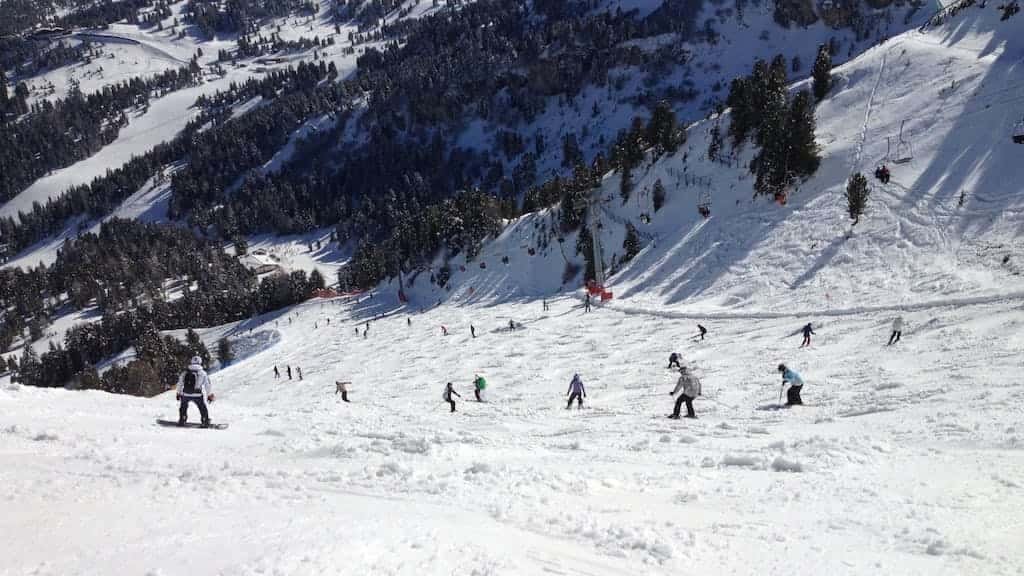
If you’re searching for the ultimate powder skiing experience, certain ski resorts are noteworthy for their exceptional powder conditions. These resorts benefit from geographic advantages that result in frequent snowfalls of light, low-density snow, also known as champagne powder.
Japan is one such destination that is renowned for its powder snow, especially in January. The snowfall during this time is so significant that it’s often referred to as ‘Japan-uary’. Other areas, like Breckenridge, Colorado, host events like ‘Ullr Fest’ to celebrate and draw more attention to the snow.
While the thrill of skiing in fresh powder is a big part of the appeal of a ski resort, it’s also worth considering the other amenities that these resorts offer. Many of them have a range of accommodations, dining options, and other activities to enjoy when you’re not on the slopes. So, whether you’re looking for a relaxed getaway or an adrenaline-packed adventure, these resorts offer something for everyone.
The Culture of Apres Ski
Even after the sun sets and the ski lifts halt, the entertainment can continue. This is where the culture of après-ski comes into play. Originating in the French Alps, après ski, or ‘after skiing’, is all about the social activities that take place after a day on the slopes. It’s a time to unwind, share stories of the day’s adventures, and indulge in some good food and drink.
The après-ski culture has evolved over the years and varies from resort to resort. In some places, it’s all about cozying up by the fire with a hot drink, while in others, it’s a lively party scene with music and dancing. No matter the setting, the spirit of après-ski is about celebrating the joy of skiing and the camaraderie among fellow skiers.
During après-ski, you can:
Indulge in hearty food and drinks
Sample regional delicacies
Engage in outdoor activities like hiking and ice skating
Enjoy wellness activities like massages and hot tubs
Explore the local area through shopping, dining, and experiencing the local nightlife.
Advanced Pow Skiing Techniques
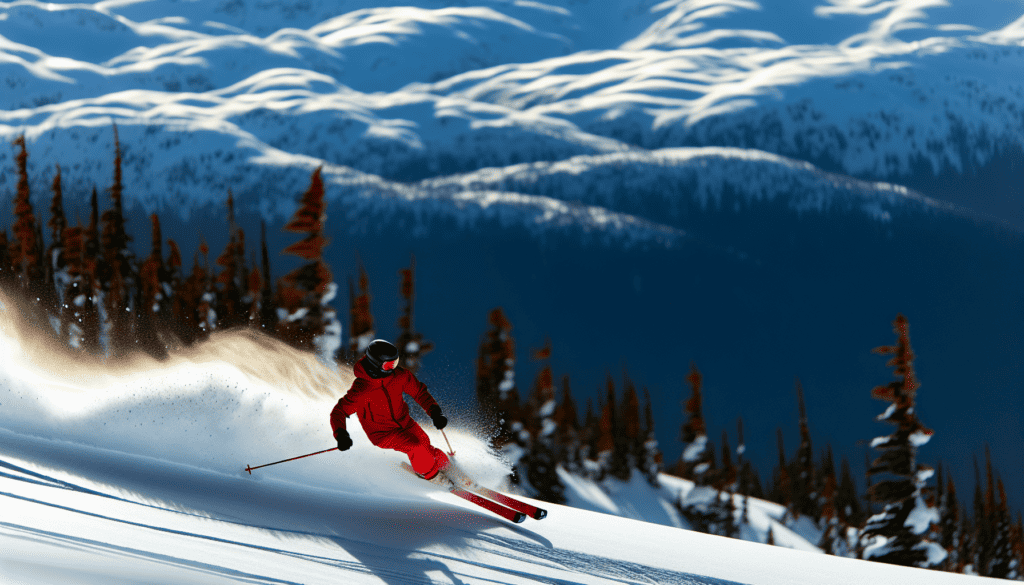
If you’re an advanced skier aiming to elevate your powder skiing skills, there are a few techniques you can experiment with. One such technique is the ‘Polish doughnut’. This freestyle maneuver can improve your carving turns in deep powder. It involves sitting down on the snow while moving, spinning around in a full circle, and then continuing skiing.
Jumping is another technique that you can use in deep snow. By performing an aerial maneuver known as ‘catching air’ or using a man-made ramp called a ‘kicker’, you can add a new dimension to your powder skiing experience. These techniques require a good understanding of body movement and balance, so it’s important to practice them in a safe environment before taking them to the slopes.
Remember, these advanced techniques should always be practiced with safety in mind. Make sure you’re comfortable with the basics of powder skiing before trying these techniques, and always be aware of your surroundings. The thrill of conquering deep snow is only worth it if you can do it safely.
Ski Etiquette and Conservation
Although carving through a field of fresh powder is an exhilarating experience, we must remember our responsibility to conserve this environment for future generations to cherish. This is where ski etiquette and conservation efforts come into play. Ski etiquette involves following certain rules and principles to ensure the safety and enjoyment of all types of skiers. By adhering to these rules, you can help preserve the powder and enhance the skiing experience for everyone.
Proper ski etiquette involves showing consideration for others on the slopes and the environment. Here are some tips to keep in mind:
Avoid unnecessary turns or traverses that can disturb the pristine surface of the powder.
Be mindful of others’ tracks and allow them to enjoy the fresh snow.
Always stay within the designated boundaries and use proper skiing techniques.
But preserving the powder isn’t just about following rules; it’s also about understanding and mitigating the impact of our actions on the environment. Climate change, human activity, and deforestation all pose significant risks to powder snow environments. By being aware of these issues and taking steps to reduce our impact, we can help preserve the powder for future generations.
Heli Skiing: Ultimate Powder Experience
For a peak-powder skiing experience, consider heli skiing as an alternative to traditional ski lift access. As the name suggests, heli skiing involves using a helicopter to access remote terrain for off-piste skiing and snowboarding. It’s an experience like no other, offering access to untouched powder in remote locations that are often inaccessible by any other means.
Heli skiing was reinvigorated by Hans Gmoser in 1965 in British Columbia. He experimented with heli skiing in the Bugaboos, utilizing a remote sawmill camp for accommodation. Since then, heli skiing has gained popularity among thrill-seekers seeking unspoiled powder.
While heli skiing offers an unparalleled powder skiing experience, it’s not for everyone. It requires a certain level of skill and fitness, and it can be quite expensive. But for those who are up for the challenge, it’s an experience that is sure to be unforgettable.
What To Pack For Your Ski Trip
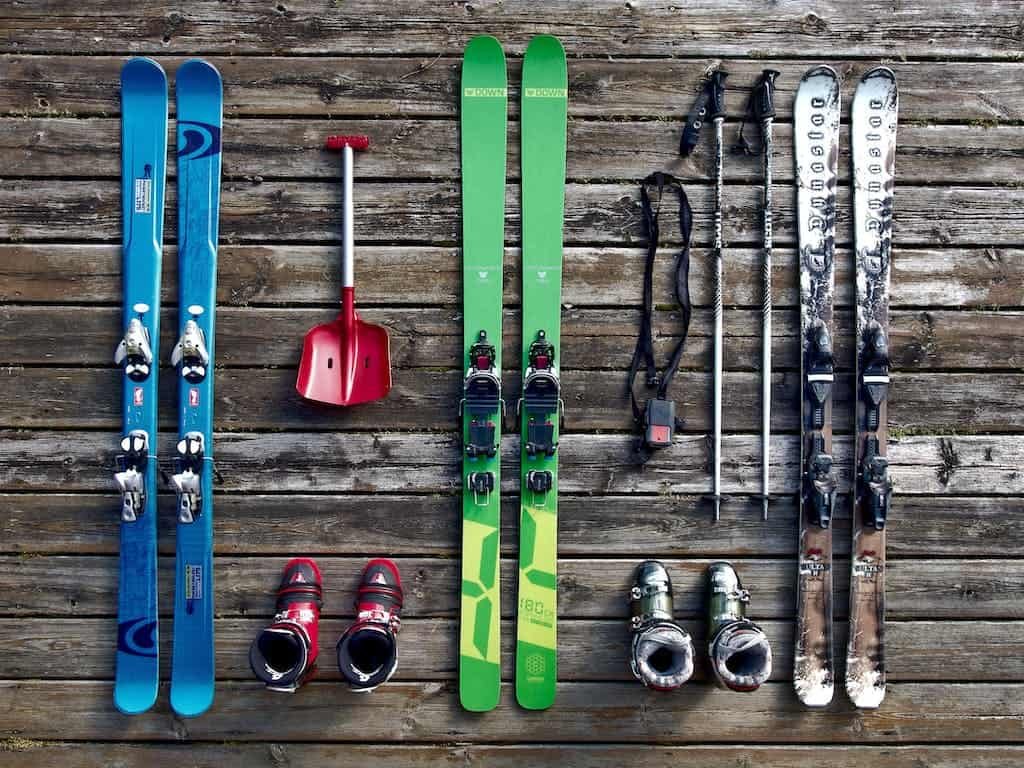
Before embarking on your powder skiing adventure, ensure you have all the essentials packed. This includes not only your skiing equipment but also your clothing and accessories. When it comes to equipment, you’ll need skis suitable for powder conditions, ski boots, ski poles, a helmet, goggles, and gloves. It’s also a good idea to bring base layers, ski pants, a ski jacket, warm socks, and snow boots to keep you warm and comfortable on the slopes.
The type of clothing you wear can also have a big impact on your skiing experience. It’s recommended to wear several layers of clothing to keep you warm and to allow for adjustments based on the weather conditions. Here are some essential clothing items for skiing:
Base layer: This efficiently removes moisture from your body.
Mid layer: This provides insulation to keep you warm.
Outer layer: This should be waterproof and breathable to protect you from the elements.
Ski pants: These are designed to keep your legs warm and dry.
Wool socks: These provide warmth and moisture-wicking properties.
Helmet: This is essential for head protection.
Hat: This keeps your head warm.
Ski gloves: These protect your hands from the cold.
By wearing the right clothing, you can ensure a comfortable and enjoyable skiing experience.
Don’t forget the accessories, either. Here are some important items to pack for your ski trip:
Base and mid layers
Ski pants
A ski jacket
Ski socks
Ski goggles
Ski mittens or gloves
A helmet
Hand and toe warmers
A ski mask or neck gaiter
With these essentials packed, you’re ready to hit the slopes like a true park rat and embrace the ski bum lifestyle!
From Bunny Slope to Black Diamond: Progressing in Pow Skiing
Progression in pow skiing involves challenging oneself and stepping beyond your comfort zone. Ski slopes are typically categorized based on their difficulty level, with green circle trails denoting novice trails and black diamond runs being the most challenging. As you gain confidence and improve your skills, you can gradually move from easier slopes to more challenging ones, eventually participating in a downhill ski race.
If you’re just starting out in skiing, you’ll likely begin on what’s known as a bunny slope. These slopes are wide, gently sloped, and free of obstacles, making them perfect for beginners to learn the basics. As a beginner, or a ‘never-ever’ as they’re often called, you’ll focus on mastering the fundamentals of skiing, like how to balance on your skis, how to make turns, and how to stop.
As you gain confidence and improve your skills, you can gradually move on to more challenging slopes. This progression is not only about improving your technical skills but also about learning how to adapt to different snow conditions and terrains. With time, practice, and patience, you’ll soon be carving your way down black diamond runs with ease.
Photography Tips in Powder Snow

Powder skiing is not only exhilarating but also incredibly picturesque. The sight of freestyle skiers carving their way down a mountain, leaving a trail of sparkling snow in their wake, is truly a sight to behold. But capturing this moment in a photograph can be a challenge, especially when skiing downhill at a fast pace. The bright snow can cause exposure problems, and the fast-paced action requires quick reflexes.
When it comes to choosing a camera for snow photography, there are a few models that stand out for their excellent performance in cold conditions. These include the Nikon D850, Fuji X-T5, and Canon EOS 5D Mark IV, among others. But the camera is just one part of the equation; you also need to know how to use it effectively.
One of the key challenges in snow photography is managing the exposure. The bright snow can often result in underexposed photos as the camera’s light meter tries to compensate for the brightness. To counteract this, you can increase the exposure by ‘+1’ or one stop. Additionally, shooting in RAW format can provide greater flexibility in post-processing, making it easier to adjust the exposure and color temperature.
Summary
Powder skiing is a thrilling and rewarding sport that offers a unique way to experience the beauty of winter. Whether you’re a beginner or an advanced skier, there’s always something new to learn and discover in the world of pow skiing. From understanding the culture and lingo of powder skiing to mastering the techniques and navigating the terrain, every aspect of this sport offers a new challenge and a chance to connect with nature in a whole new way.
But while the thrill of carving your way down a mountain covered in fresh powder is undeniable, it’s important to remember that safety should always be our top priority. By understanding the potential dangers and taking the necessary precautions, we can enjoy this sport safely and responsibly.
Lastly, it’s crucial to respect the environment and preserve the powder for future generations to enjoy. By adhering to ski etiquette and supporting conservation efforts, we can ensure that the pristine powder snow we love so much will continue to grace our mountains for years to come.
Frequently Asked Questions
What does POW mean in skiing?
POW is the slang term for fresh powder, the crème de la crème of skiing. It is lightweight, fluffy, and dry snow that allows skiers to experience the sensation of ‘floating’ on the surface.
What is skiing slang?
Skiing slang often consists of terms like ‘Gnar’, which is used to describe challenging or dangerous terrain; ‘Grab’, to grab the edge of a ski or snowboard with your hand while performing a trick; ‘Green Run’, an easy ski run that is often beginner-friendly; and ‘Groomers’, groomed ski runs.
What does POW stand for in snowboarding?
POW stands for “powder,” the fresh and fluffy snow found off-piste. It is commonly used in snowboarding slang and is the holy grail of snowboard conditions. Shredding pow means to go snowboarding in the freshly fallen snow.
What equipment do I need for powder skiing?
To enjoy powder skiing, you’ll need skis designed for this type of terrain, ski boots, poles, a helmet, goggles, and gloves. Additionally, base layers, ski pants, a jacket, warm socks, and snow boots are essential to staying warm and comfortable.
What is heli skiing?
Heli skiing is a thrilling experience that involves using a helicopter to access remote off-piste terrain for skiing and snowboarding. It provides an opportunity to ski in untouched powder in otherwise inaccessible locations.



